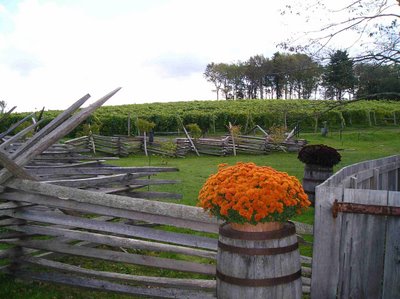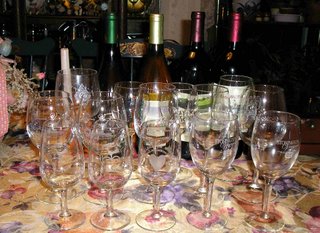Are We There Yet?
One of the big surprises for newbies is that something on the order of 95 percent of the wine you find in stores is ready to consume the day you buy them. No wine before its time? A gross exaggeration, or even myth, perpetrated by marketers years ago.

But if you want to know the joys of a well-aged wine you could do a lot worse than to invest in some Brunello di Montalcino. Vacationing in Tuscany and want to bring back a few bottled memories? Forget about chianti, a decent enough but unsensational table wine. Brunello is a darker, richer Tuscan wine with much greater longevity.
If you want to monitor a wine's development over time, Brunello is a great place to start. Sure, there are lots of wines you can buy that will improve with age, such as the better Bordeaux or California cabs, and Barolos or Barbarescos. But you can pay an awful lot for these ageworthy wines.
Brunellos are not exactly cheap; in fact, they're getting much more expensive. But I think they still represent a great buy relative to other collectible wines. And, in my opinion, if you can't wait to open up a bottle, Brunellos still have a lot to offer even if drunk younger than recommended.
Back when the heralded '97s were released, I bought as many as I could. But I could only afford one or two bottles of several different labels because the price tag had climbed to $50 - $60 a bottle. A local wine store, however, highly recommended one that went for only about $32 a bottle -- Fattoria La Lecciaia. Anxious to try such a wine over time, like the big guys with deep pockets, I plunked down the hard-earned cash for half a case.
Last night we tried the wine for the fourth time, and I'm happy to report that this wine is absolutely delicious right now. Though not quite 10 years old, it's either at peak or just starting to slide ever so slightly over the hump. The tannins have softened nicely, producing a completely silky texture. And, the youthful, vigorous fruit has morphed a bit into a complex blend of earth and leather and brown spice that can be an amazing revelation for anyone used to drinking fruit bombs.
If you don't currently tuck away a few bottles for aging you owe it to yourself to strive for this unique tasting experience, now and then. Yes, you want to make sure you're choosing the right wine from the right vintage for aging, and these wines can be expensive. But you don't want to miss this tasting experience. Just ask your wine retailer to point out the bargains among the real ageworthy wines and get as many as you can so that you can taste over time and learn.
The '97 Fattoria La Lecciaia has been berry, berry good to me.

But if you want to know the joys of a well-aged wine you could do a lot worse than to invest in some Brunello di Montalcino. Vacationing in Tuscany and want to bring back a few bottled memories? Forget about chianti, a decent enough but unsensational table wine. Brunello is a darker, richer Tuscan wine with much greater longevity.
If you want to monitor a wine's development over time, Brunello is a great place to start. Sure, there are lots of wines you can buy that will improve with age, such as the better Bordeaux or California cabs, and Barolos or Barbarescos. But you can pay an awful lot for these ageworthy wines.
Brunellos are not exactly cheap; in fact, they're getting much more expensive. But I think they still represent a great buy relative to other collectible wines. And, in my opinion, if you can't wait to open up a bottle, Brunellos still have a lot to offer even if drunk younger than recommended.
Back when the heralded '97s were released, I bought as many as I could. But I could only afford one or two bottles of several different labels because the price tag had climbed to $50 - $60 a bottle. A local wine store, however, highly recommended one that went for only about $32 a bottle -- Fattoria La Lecciaia. Anxious to try such a wine over time, like the big guys with deep pockets, I plunked down the hard-earned cash for half a case.
Last night we tried the wine for the fourth time, and I'm happy to report that this wine is absolutely delicious right now. Though not quite 10 years old, it's either at peak or just starting to slide ever so slightly over the hump. The tannins have softened nicely, producing a completely silky texture. And, the youthful, vigorous fruit has morphed a bit into a complex blend of earth and leather and brown spice that can be an amazing revelation for anyone used to drinking fruit bombs.
If you don't currently tuck away a few bottles for aging you owe it to yourself to strive for this unique tasting experience, now and then. Yes, you want to make sure you're choosing the right wine from the right vintage for aging, and these wines can be expensive. But you don't want to miss this tasting experience. Just ask your wine retailer to point out the bargains among the real ageworthy wines and get as many as you can so that you can taste over time and learn.
The '97 Fattoria La Lecciaia has been berry, berry good to me.








